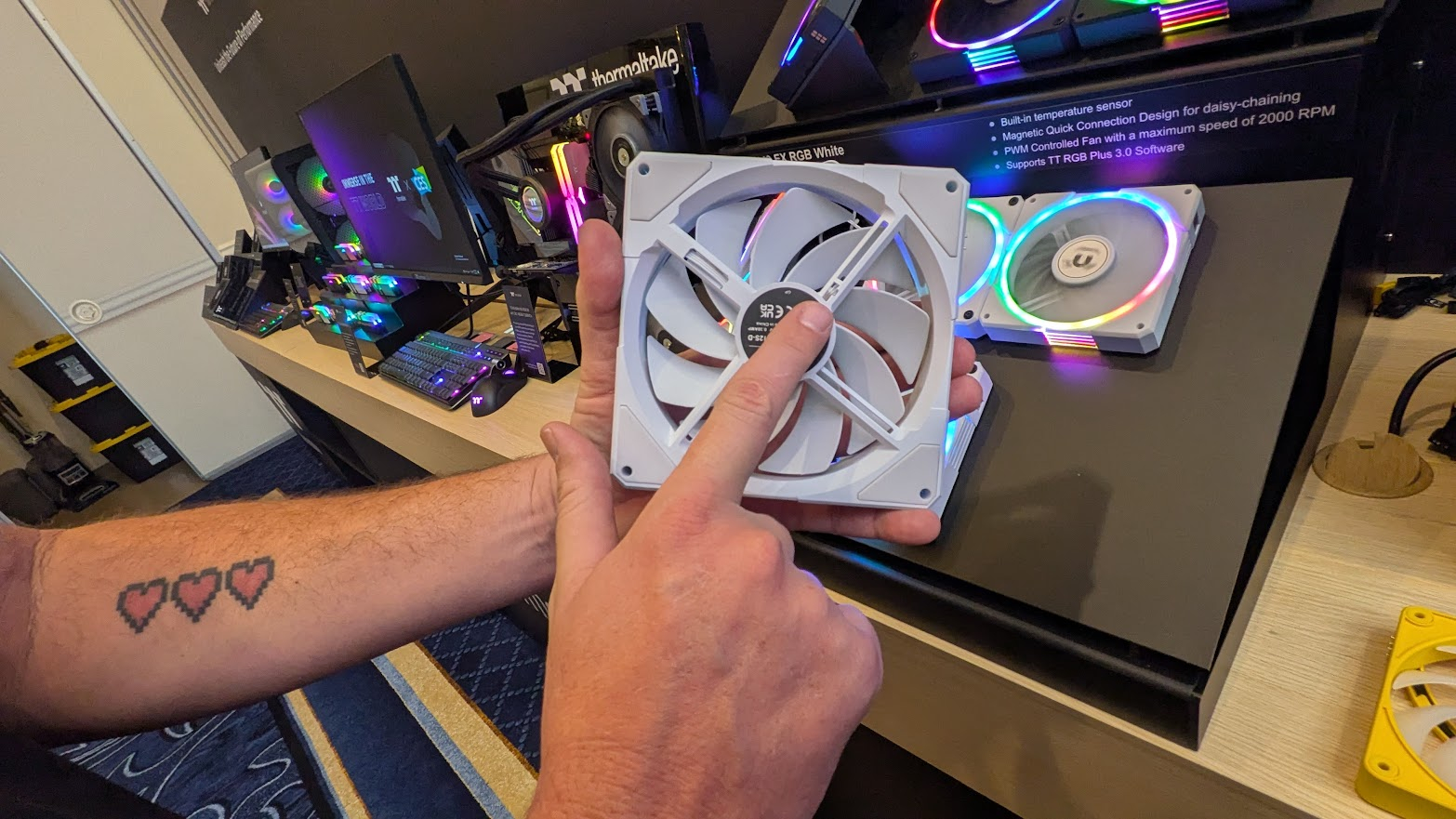Whether controlled by the motherboard or a dedicated controller, your PC’s case fans turn on and off depending on how hot the management software thinks your PC is. Problem: Most computers get CPU and GPU temperature and usage data, but not the specific area where your case’s fans live. You may have case fans that are located very far away from the hottest components, and they may be spinning less (or more) depending on the temperature at the top, front, or bottom of the case.
ThermaltakeThe new TS120 and TS140 case fans are the company’s first fans to have built-in temperature sensors, allowing everyone to know exactly how hot or cold it is in any part of the case. Then the upcoming TT Plus RGB 3.0 software will allow you to view temperatures and control fan curves, presumably (though this has not been confirmed) on a per-fan basis.
The TS120 and TS140, due out in the first quarter at $89 for a set of three 120mm fans or $94 for three 140mm fans, are not the first case fans with built-in temperature sensors. We believe this honor belongs to Corsair, whose QX120 fans debuted in 2023.. However, Thermaltake fans will sell for about $40 less, even at MSRP, and will integrate nicely with the brand’s rich ecosystem of coolers, cases, and peripherals.
The TS120/TS140 connect to each other using MagForce 2.0, a magnetic connection that allows them to be easily assembled in rows. Available in black or white, they feature rich ARGB rings around the fan itself, as well as sets of RGB lines on each side. Each set of three is connected to a dedicated controller. The fans operate at a maximum speed of 2000 rpm.
I had a chance to see the TS120/TS140 fans at Thermaltake. KES Booth 2025 and I were impressed by their bold appearance and advanced functionality. The ability to set the temperature using the fan is a recipe for both lower temperatures and a quieter system overall.

